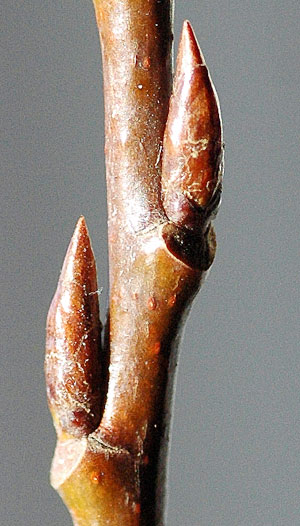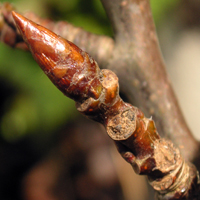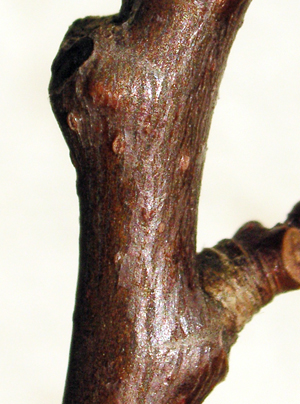Aspen
Aspen (Populus tremula), also known as quaking aspen as the leaves 'flutter' in the gentlest breeze. Aspen has a very wide distribution, being found from Scandinavia to North Africa, and across most of Europe. It is more common in the north of Britain than the south. Like Birch, Alder, and Mountain Ash, Aspen is a pioneer species - that is to say, it is one of the first to colonise an area of open / disturbed ground in a wood or forest. In many areas, Aspen reproduces vegetatively (that is, asexually) by means of suckers called ramets. These are new shoots produced by old roots. The root system is quite shallow.
Leaf
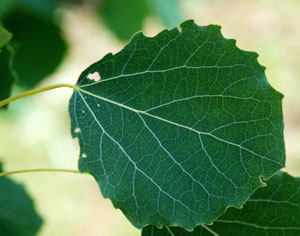
The leaves are usually rounded, though there is a 'point' at the leaf apex - with a few ‘rounded’ teeth on the margin. The main veins stand out, sometimes having a white or creamy colour. On young suckers (ramets), the leaves may be more triangular in shape.
The leaf stalks (petioles) are unusual as they are quite long and have a somewhat flattened or squashed appearance in cross section. They are also flexible near to the lamina or leaf blade. This means that the gentlest breeze causes the leaves to flutter (hence its specific name - tremula); creating a 'dry', rustling sound.
In Spring, when the leaves first open - they have a browny-copper colour. In autumn, the leaves turn to a yellow before leaf fall.
Buds, Bark & Stem
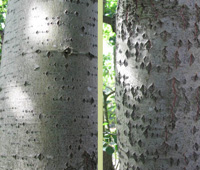
The bark is grey or green / grey in colour on younger trees and smooth, but with age the bark can become pitted or roughened by the extensive lenticels (gas exchange structures)
Flowers and Fruits
Aspen trees are either male OR female. That is to say the species is dioecious. The tree produce their flowers or catkins in March or April, before the leaves appear. Fertilised female catkins ripen during the summer and release minute seeds, which have small hairs or tufts and are dispersed on the wind.
Winter Twigs
